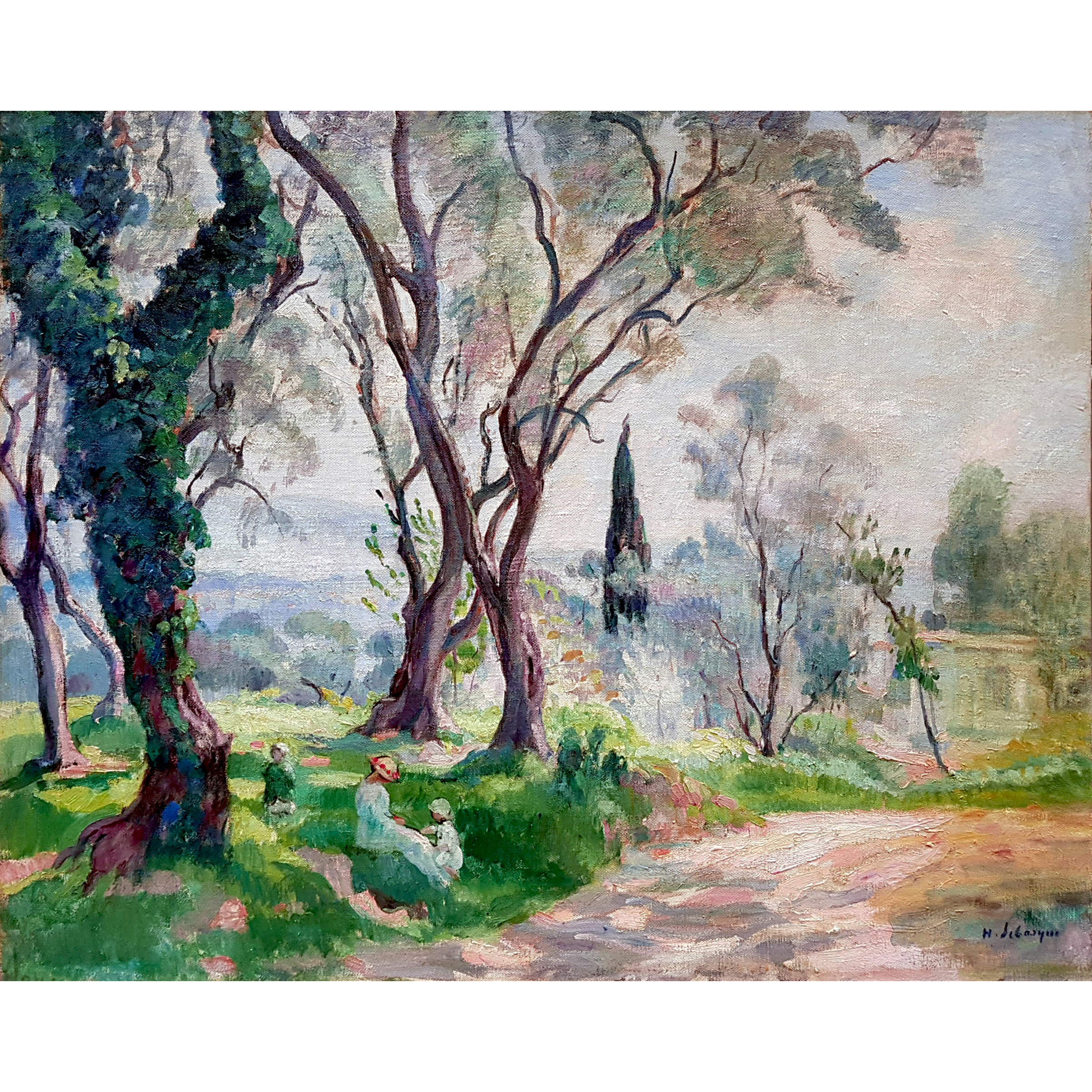Description
Henri Lebasque est né le 25 septembre 1865 à Champigné (Maine-et-Loire). Elève de l’école des Beaux-Arts d’Angers, il vient à Paris en 1886 ; il devient un court moment élève de Bonnat, puis d’Humbert qu’il assistera dans la décoration du Panthéon. Mais il est certain que sa fréquentation d’avec Camille Pissarro eut sur lui la plus grande influence.
En 1893, au Salon des Indépendants de Paris, Lebasque rencontre Luce et Signac : il va suivre ses deux artistes quelques années dans leur vision pointilliste. De 1900 à 1906, Lebasque peint régulièrement sa femme est ses enfants dans sa propriété de Lagny. Mais c’est la découverte du Midi de la France qui va transformer sa peinture. Après plusieurs voyages en Vendée, en Bretagne et en Normandie, c’est sur la côte d’azur que Lebasque s’installe définitivement en 1924.
Il fut l’ami de Bonnard, avec qui il partage certains thèmes. Lebasque a entre autre travaillé aux décorations du théâtre des Champs-Élysées et à celles du transatlantique Paris.
Dans ce tableau, Henri Lebasque a représenté sa famille se reposant à l’ombre des grands arbres. Daté 1914, il s’agit très certainement d’une de ses propriétés sur la côte d’azur. Lebasque parvient à créer une harmonie entre la représentation de sa famille et la nature environnante.
Provenance : collection privée Allemande. Étiquette au verso : Salon d’art Abel, Cologne.
Musées :
Angers
Genève, Petit Palais
Lille, Musée des Beaux-Arts
Nantes
Paris, Musée d’Art Moderne
Bibliographie :
E. Bénézit, édition Gründ, Tome VIII, page 373.
Henri Lebasque was born on 25 September 1865 in Champigné (Maine-et-Loire).
He was first a pupil at the School of Fine Arts in Angers. He came to Paris in 1886 and for a short time was a pupil of Bonnat, then of Humbert, whom he helped decorate the Pantheon. But it is certain that his attendance at the old Pissarro, on the outskirts of Paris, had more influence on him than Bonnat’s lessons.
In 1893 he met Luce and Signac at the Salon des Indépendants in Paris and adopted pointillism for a few years. Living in Lagny in the 1900s, married and father of a family, he painted, from 1900 to 1906, the nearby woods of the Marne. It was with his discovery of the South of France that the most complete transformation of his painting took place. He then continued to stay in other regions: Vendée, Brittany, Normandy. After Saint-Tropez and Sainte-Maxime, he finally settled permanently in Le Cannet in 1924.
Friend and neighbour of Bonnard, he came closer to it by the similarity of themes. He worked on the decorations of the Théâtre des Champs-Élysées and those of the transatlantic liner Paris. He died in August 1937 in Le Cannet (Alpes-Maritimes).
In this painting, Henri Lebasque depicted his family resting in the shade of tall slender trees. A brightly lit path is leading out of the picture on the right and directs the gaze onto the painting’s middle ground with smaller, blurred buildings next to shrubs and trees in pastel shades. As is often the case in his paintings, Lebasque creates a harmonious uniformity between the depiction of his family and the surrounding nature.
Label from Art Salon Abel, Cologne on the reverse.
Museums:
Angers
Genève, Petit Palais
Lille, Musée des Beaux-Arts
Nantes
Paris, Musée d’Art Moderne
Bibliography:
E. Bénézit, édition Gründ, Tome VIII, page 373.



